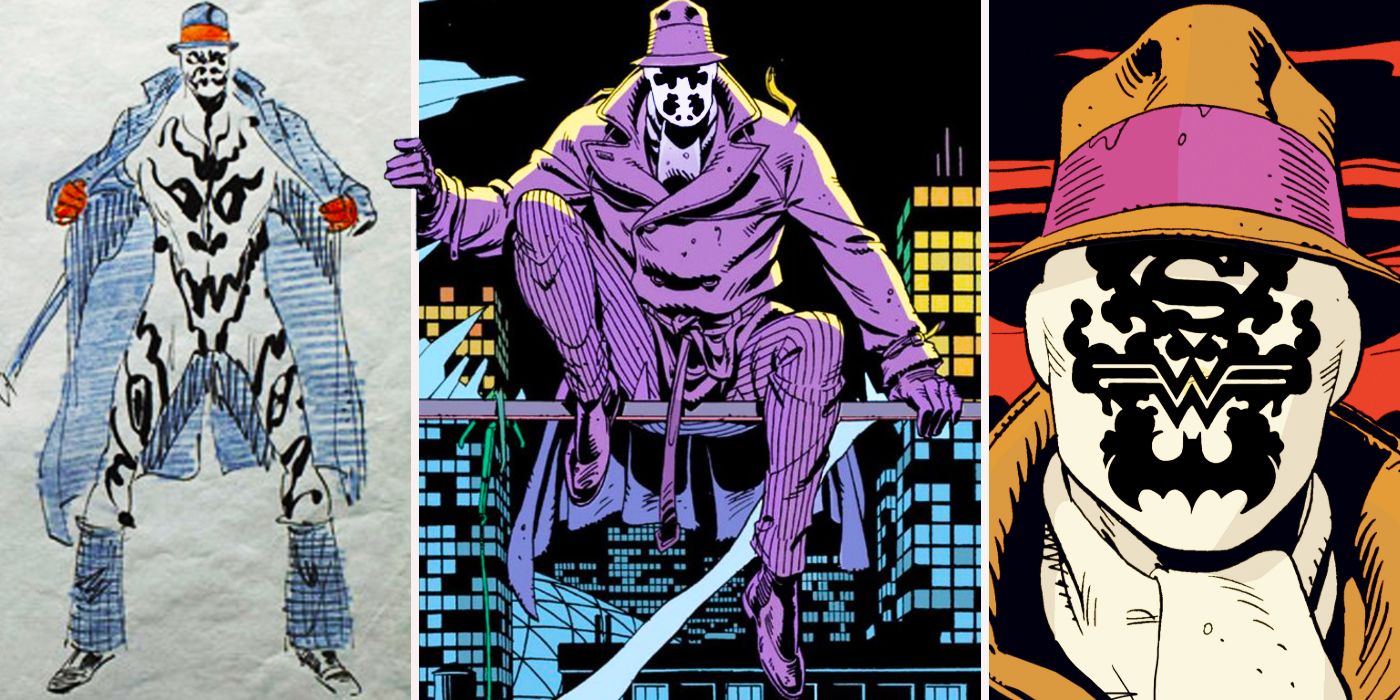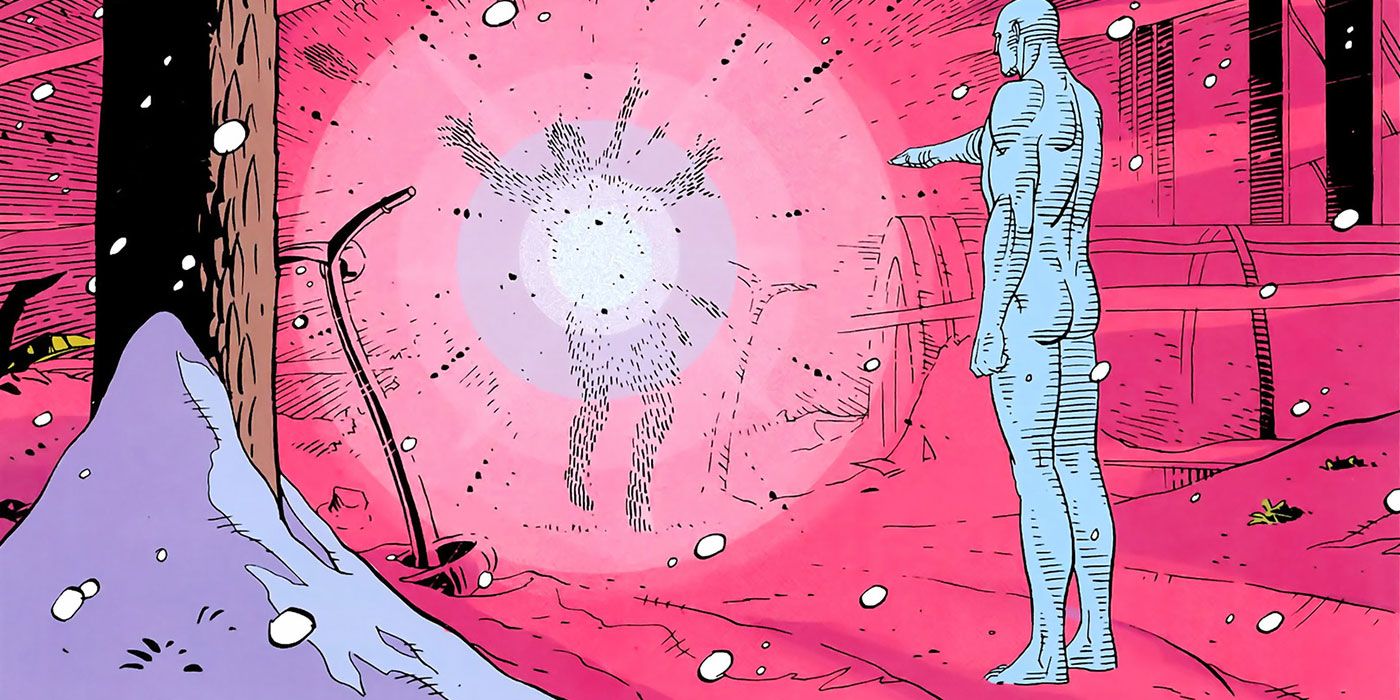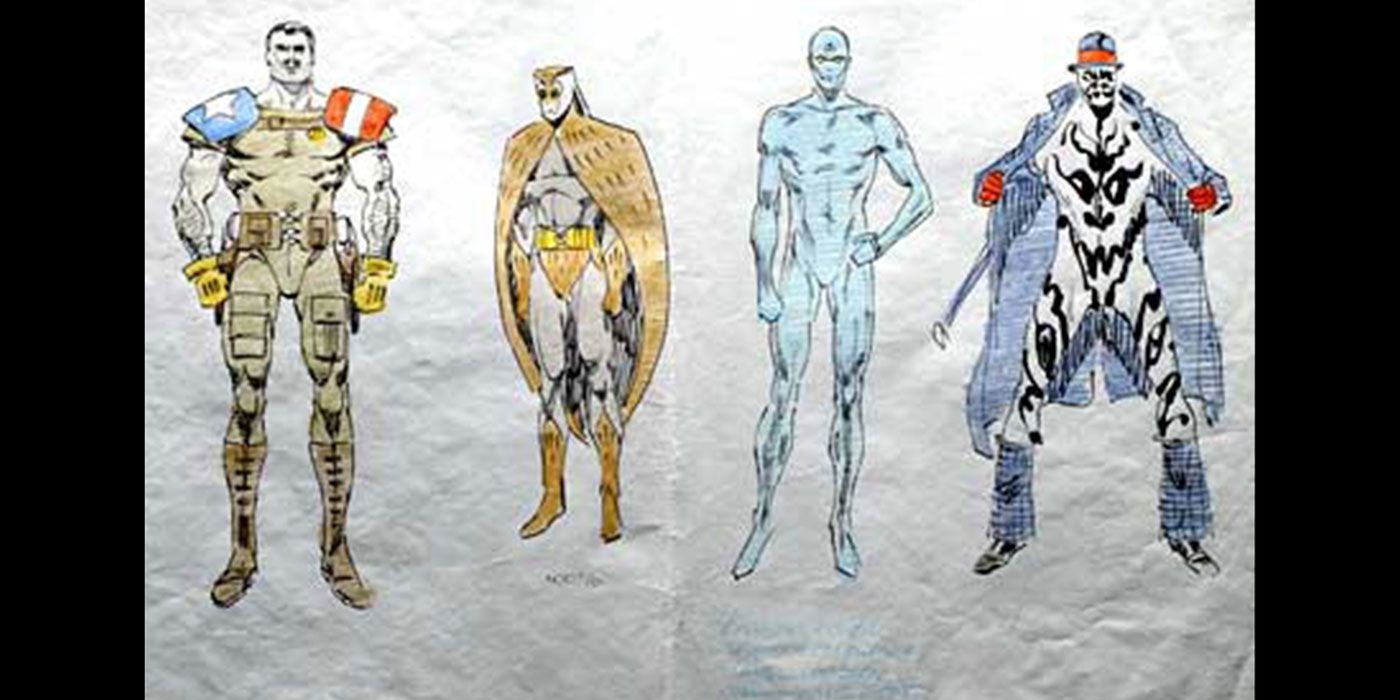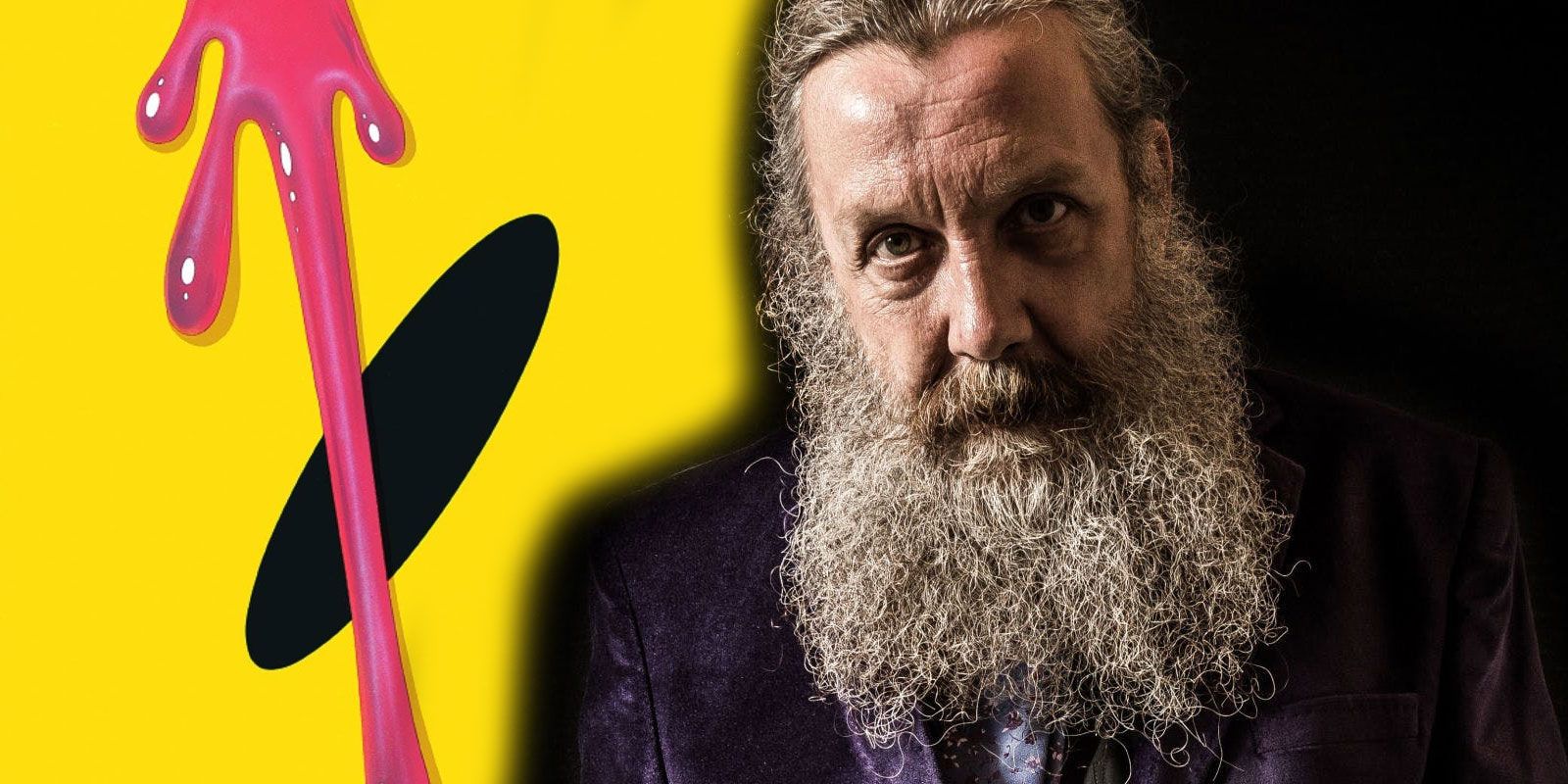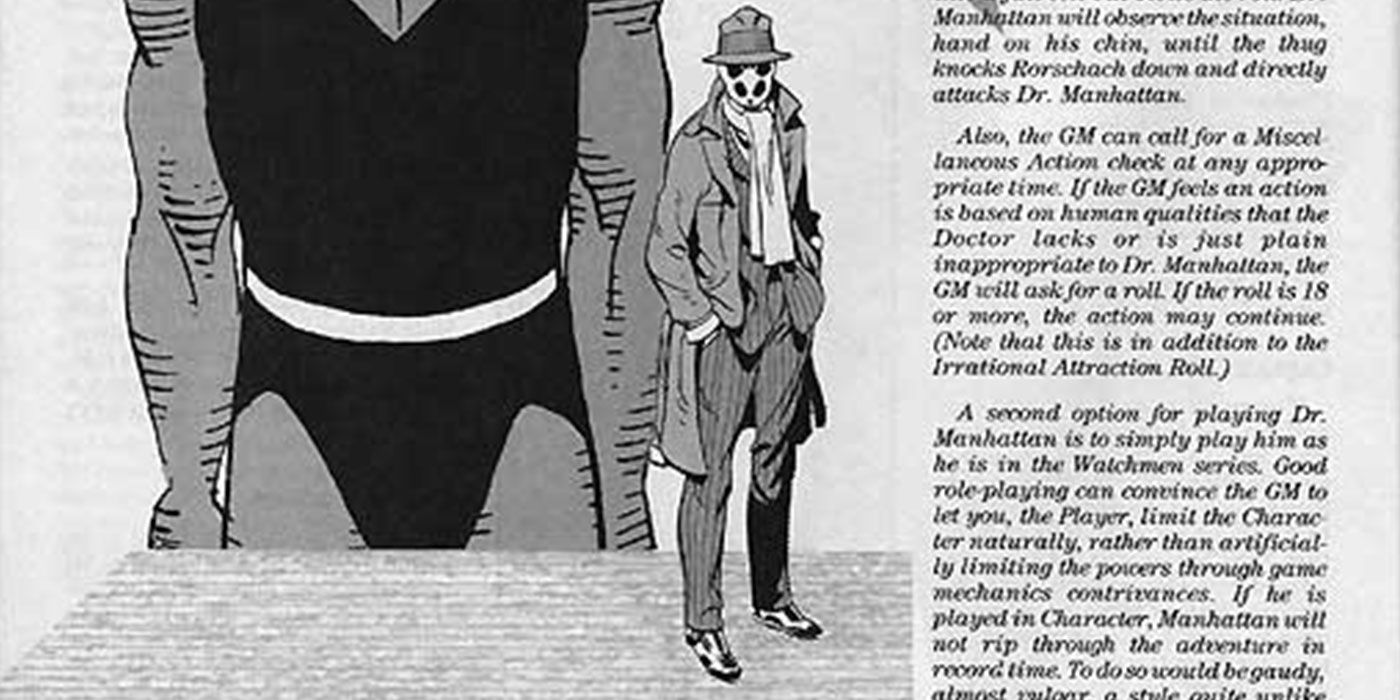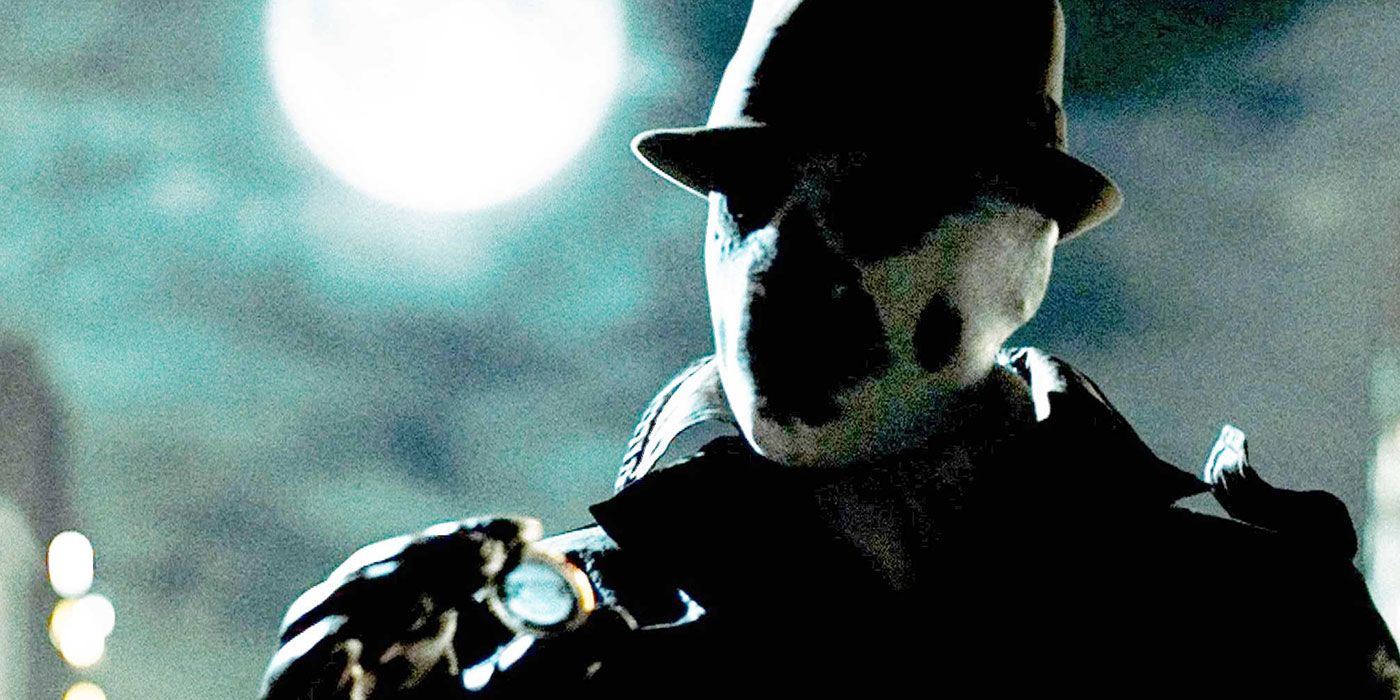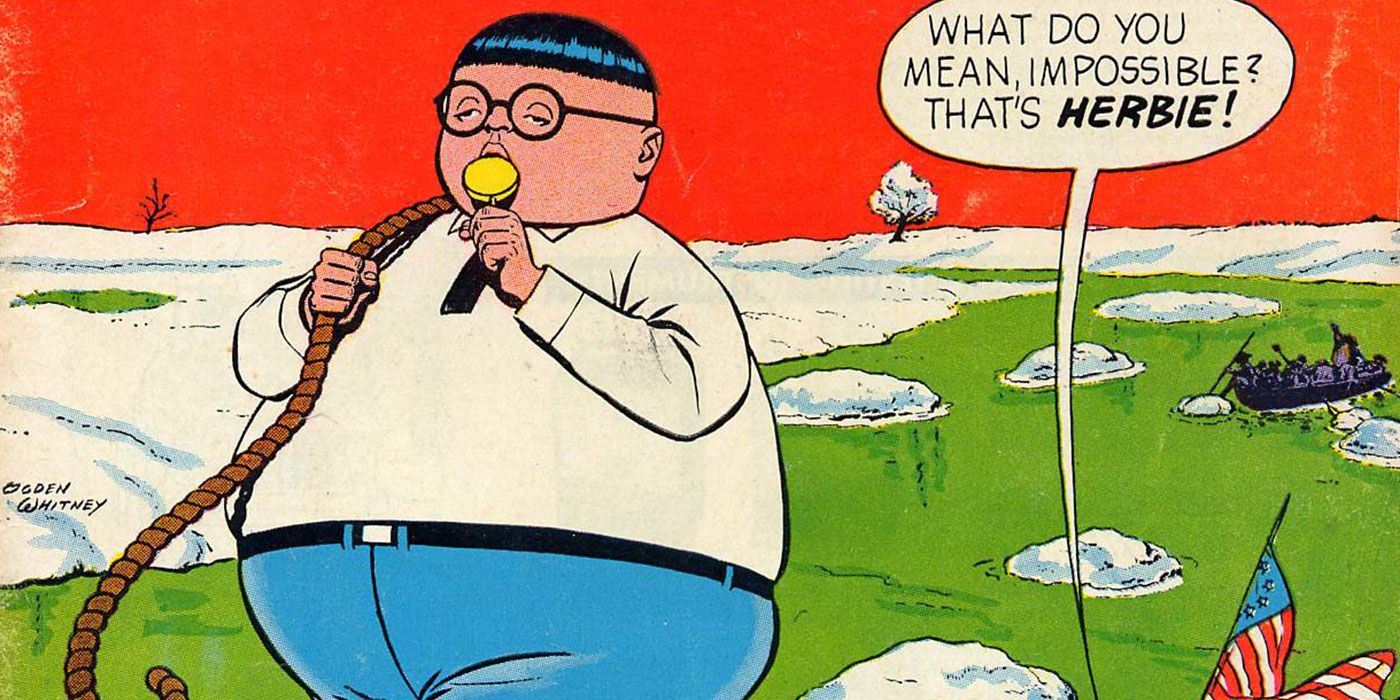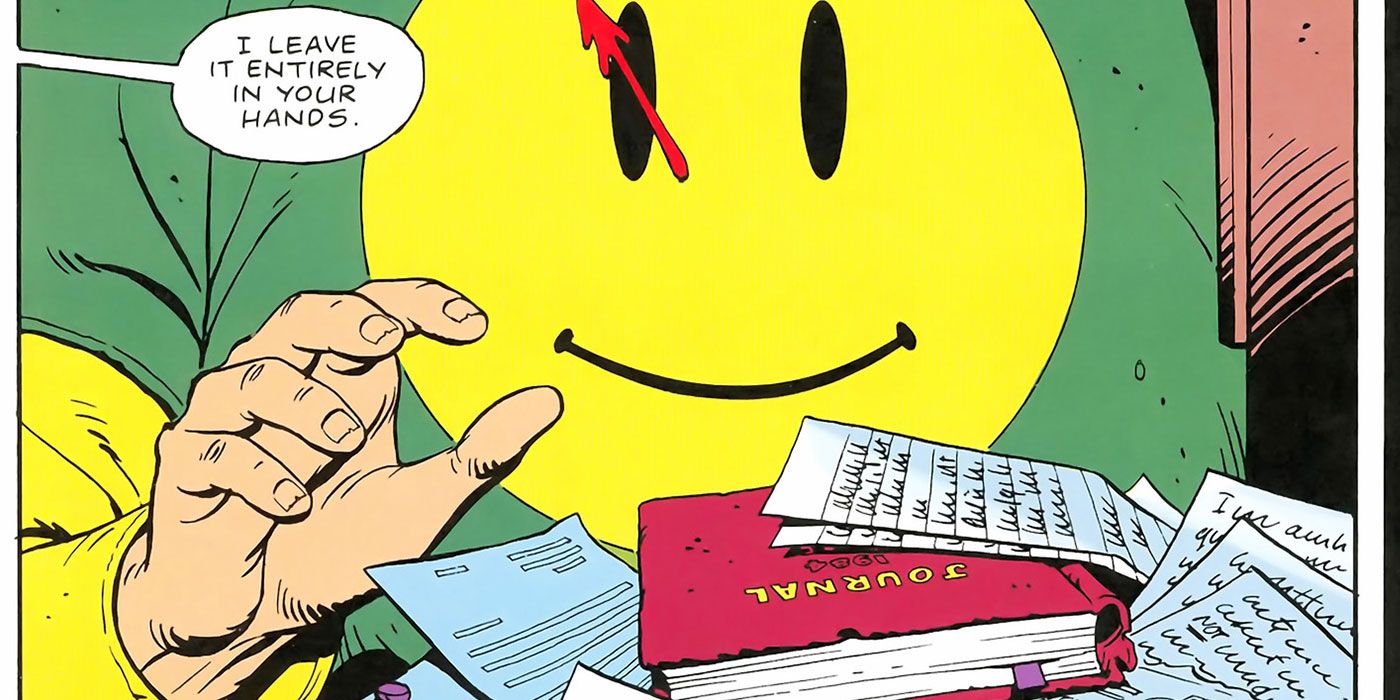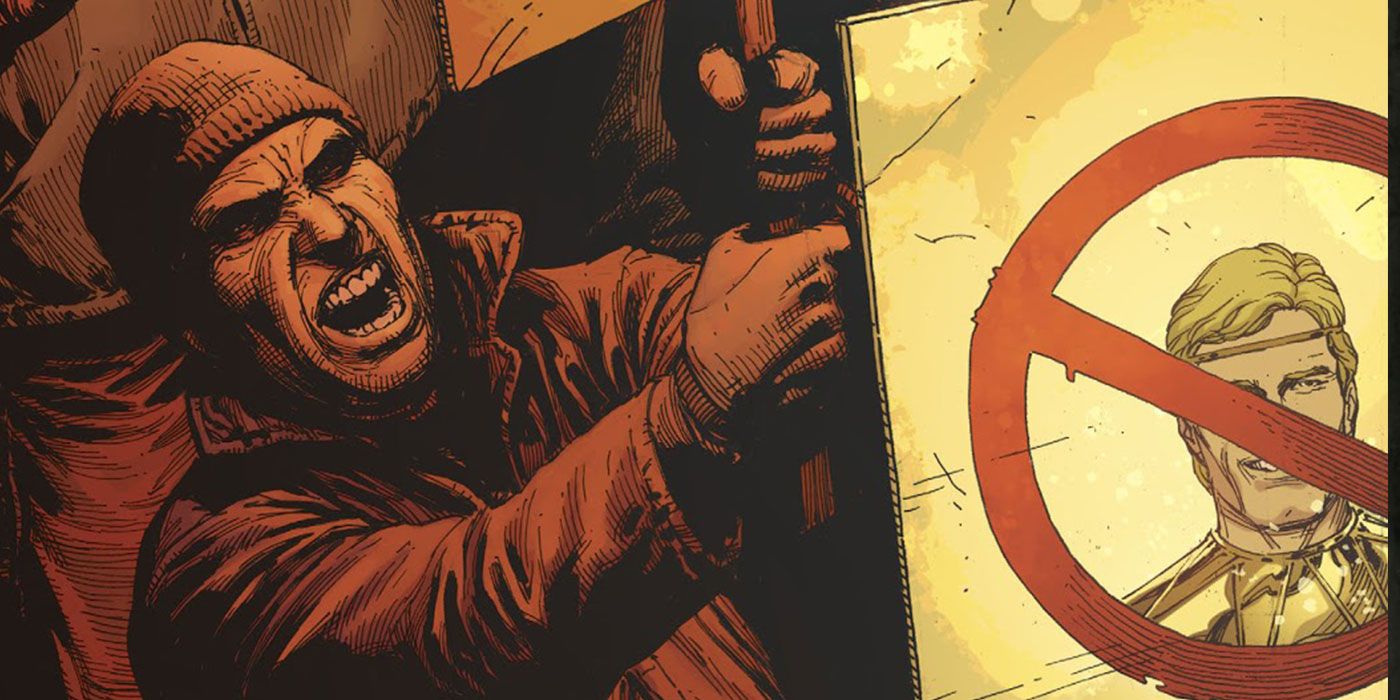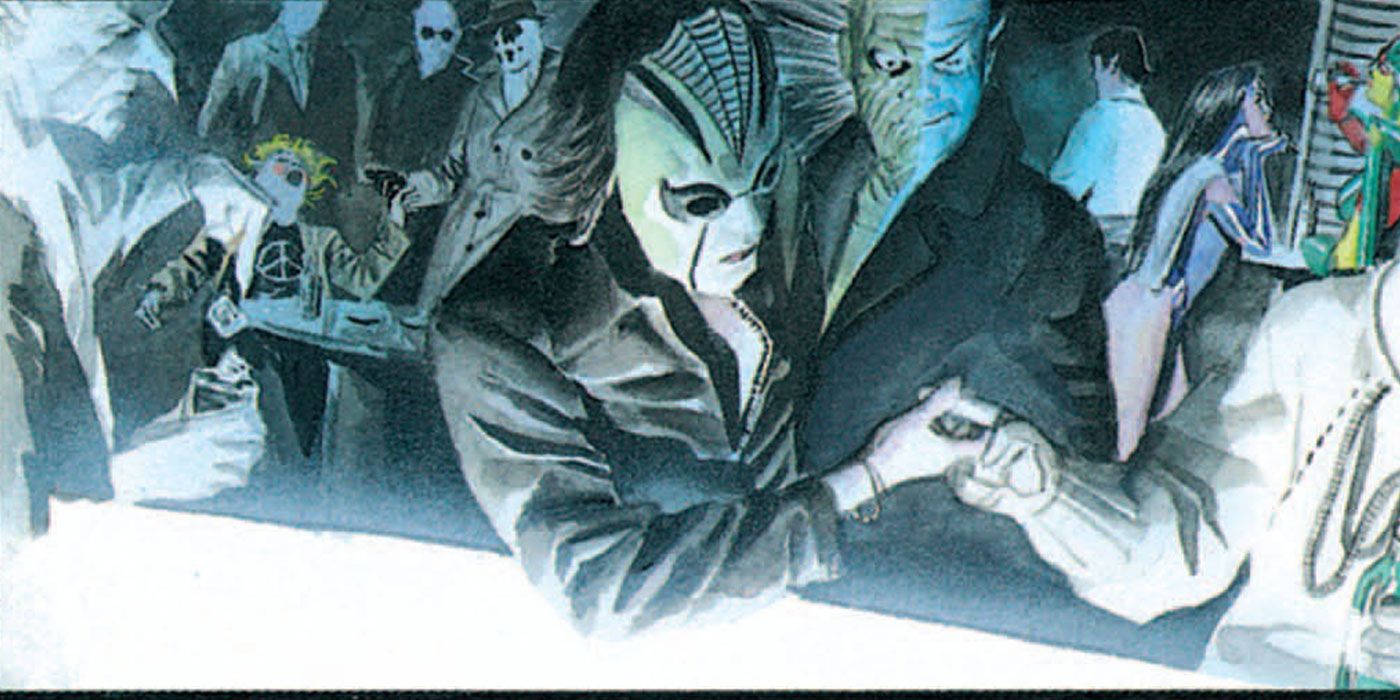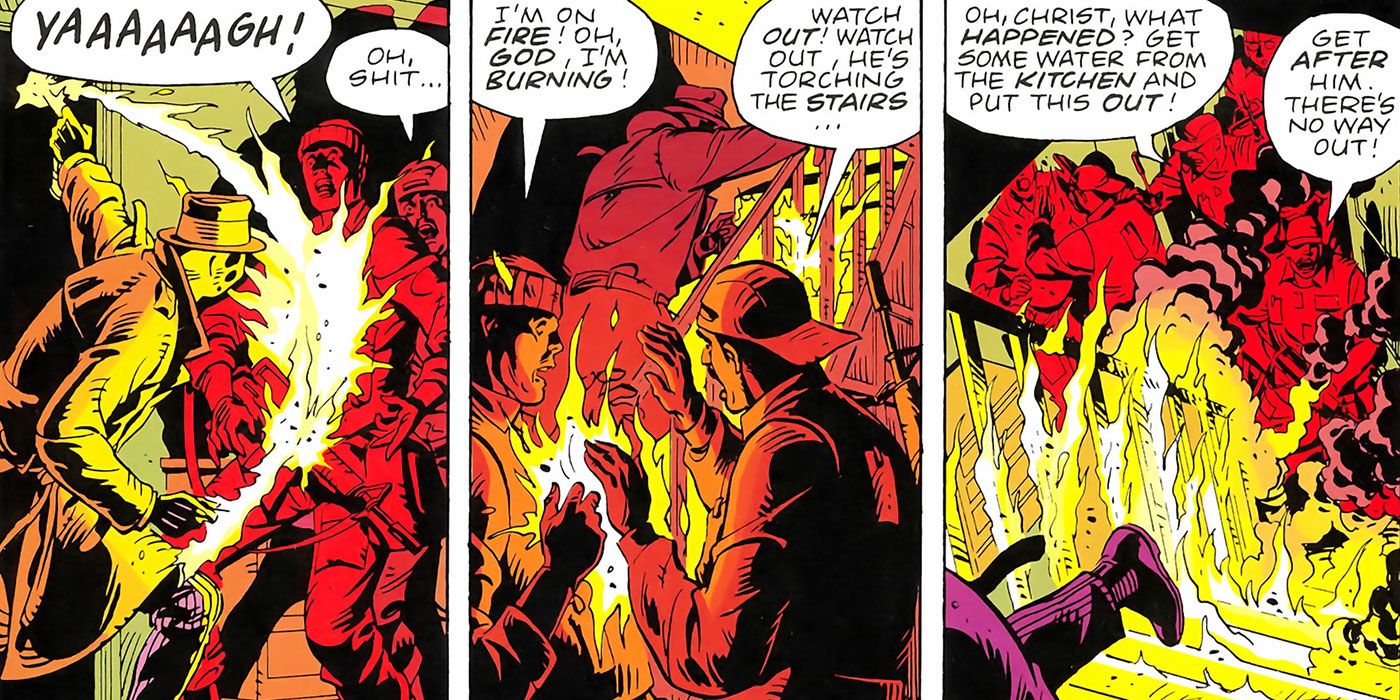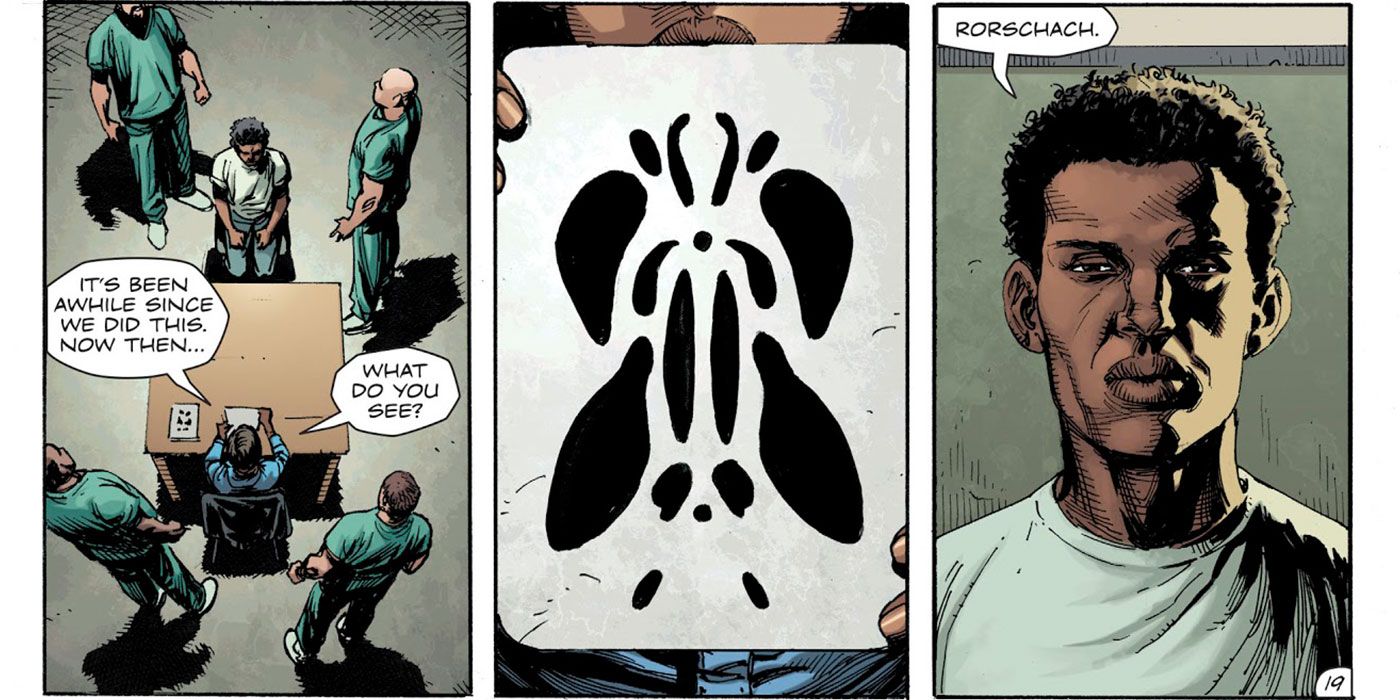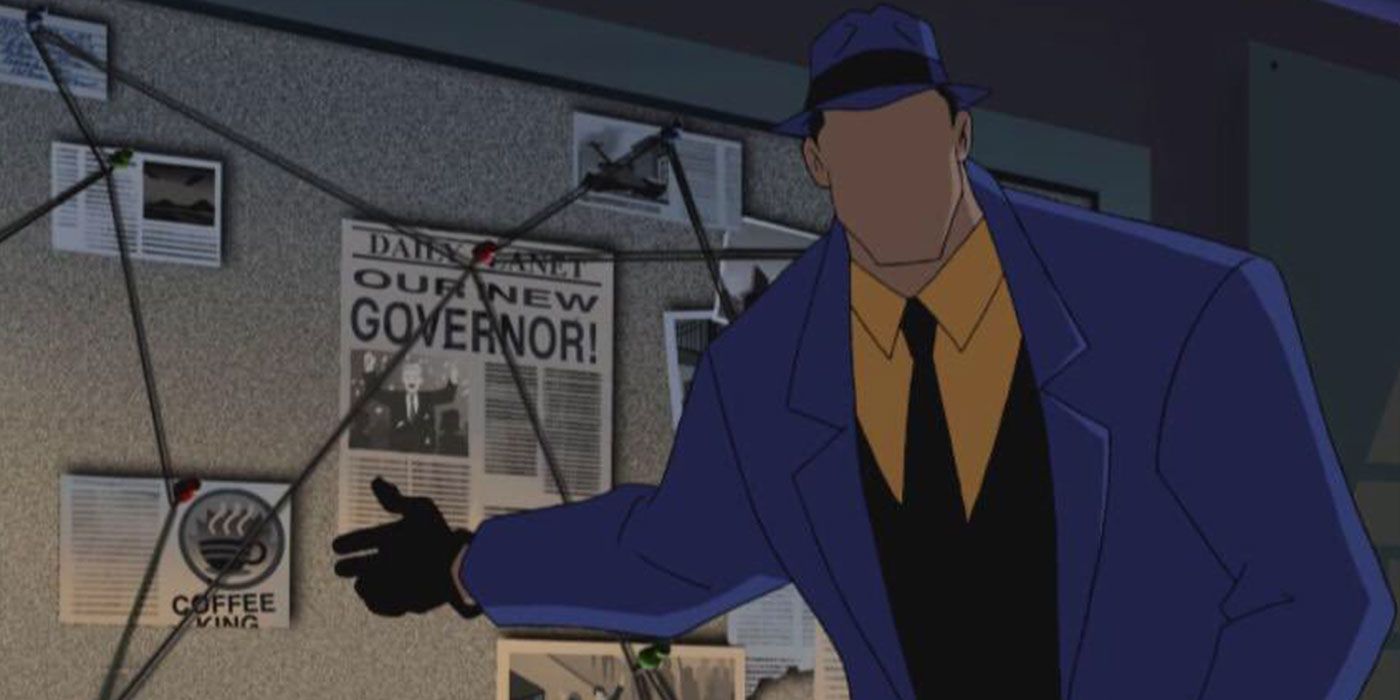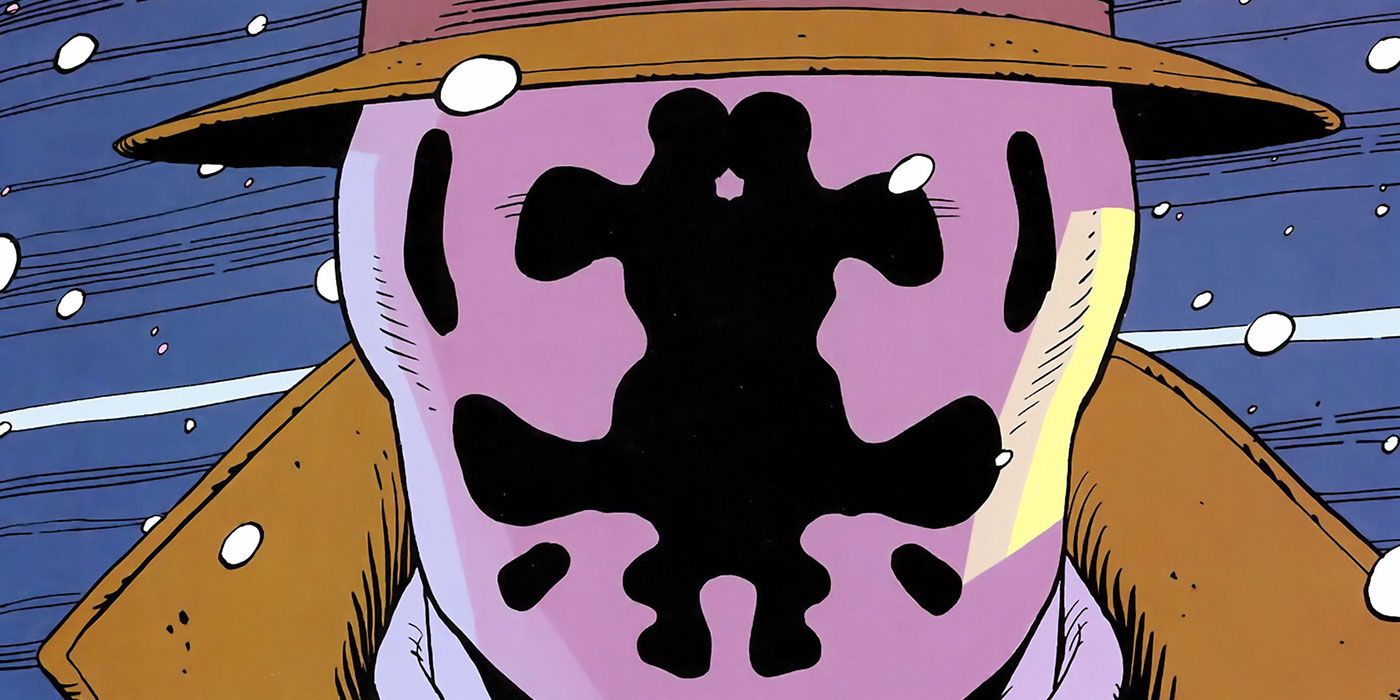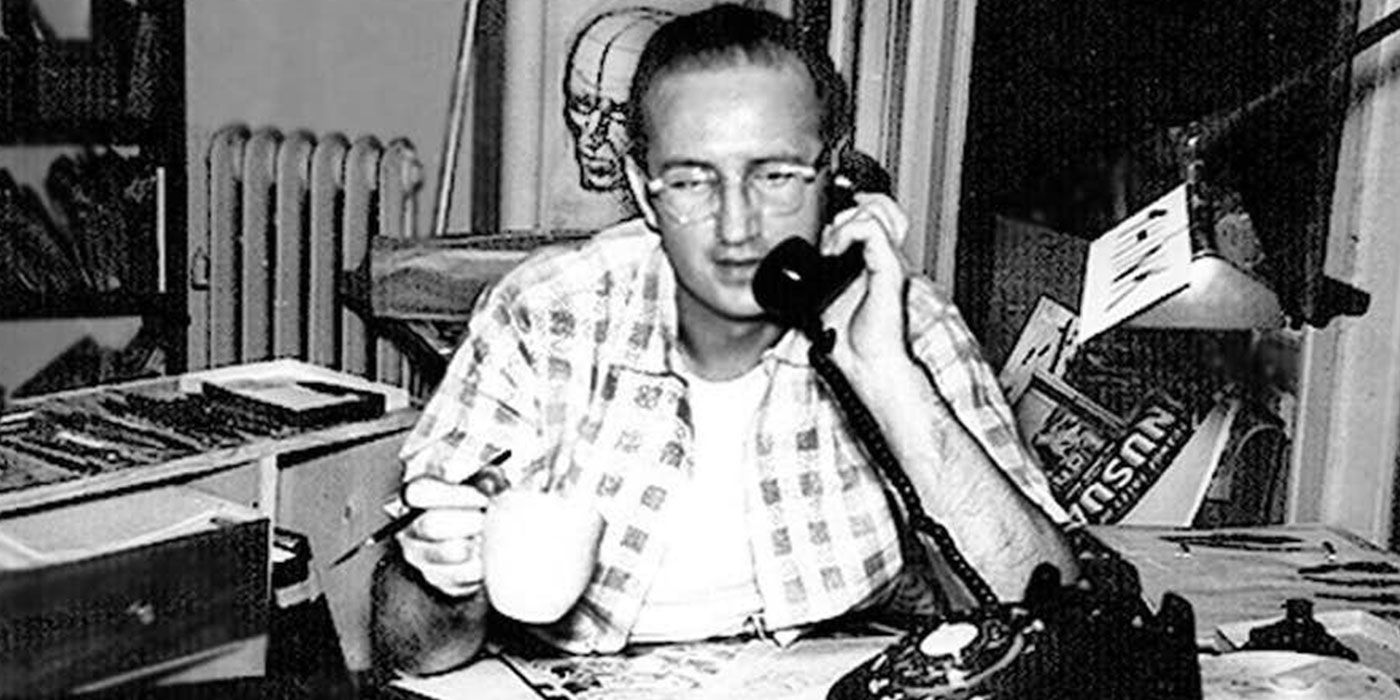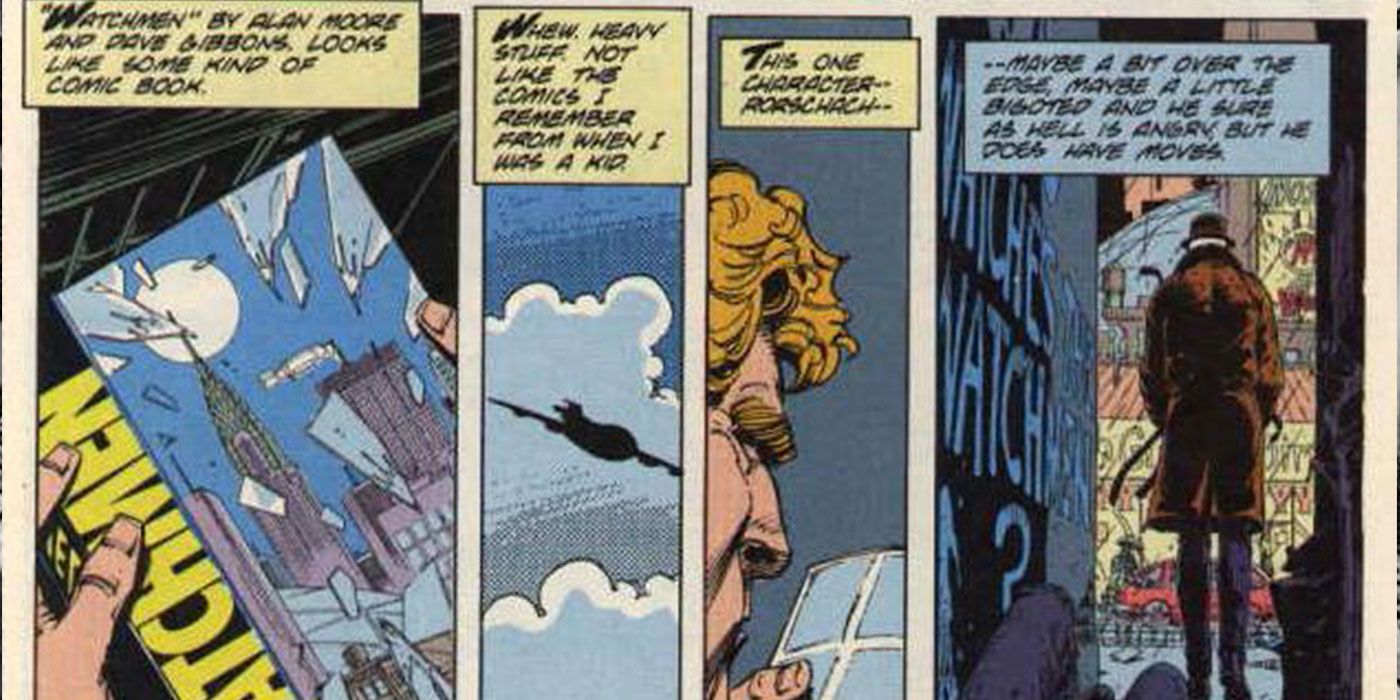Erratic, enigmatic and driven by an often twisted sense of morality, Walter Kovacs, aka Rorschach, is a far cry from your standard superhero. Even so, Rorschach remains one of the most iconic comic book protagonists in the medium's history; and for good reason. Rorschach is still one of the finest examples of an anti-hero over 30 years after his debut in Watchmen #1 by writer Alan Moore and artists Dave Gibbons and John Higgins. The Watchmen narrator and his co-stars represented a groundbreaking shakeup for superhero comics that countless creators would try and fail to emulate for years to come.
Watchmen has been on our minds a lot lately now that Doomsday Clock is in full swing and HBO has plans for another adaption of the original series. We've also got a brand new Rorschach pick up the mantle and Doomsday Clock #4, by writer Geoff Johns and artists Gary Frank and Brad Anderson, finally revealed more information about Rorschach II's backstory. This got us thinking about Walter Kovacs' own history in a major way. So for this list we've decided to dig through Rorschach's journal for 15 secrets you may not have known about everyone's favorite right-wing vigilante.
15 MOORE DIDN'T ORIGINALLY PLAN TO KILL HIM
In the years since Watchmen became a cultural phenomenon, Moore has given countless interviews providing insight into the creation and development of his magnum opus. One of the most interesting things Moore has revealed about the process of writing Watchmen was that he hadn't originally intended to kill off the ill-fated Rorschach.
Moore has said he realized sometime during his work on issue #4 that Rorschach's inability to compromise his strict moral code would mean he couldn't possibly survive through the end of the story. As he started to really understand what made the character tick, Moore came to the conclusion that due to the many traumas he'd suffered in his life, what Rorschach really wanted most was to be able to die with dignity.
14 HE ALMOST HAD A MUCH LOUDER COSTUME
It's hard to imagine Rorschach dressed in anything other than his trademark trench coat, hat and iconic mask combo. However, taking a look at Dave Gibbons' concept art for the character shows a version of Rorschach's costume that's markedly different than the one we know today.
Instead of the stylish purple pinstripe suit he normally wears underneath his coat, Rorschach was originally going to wear a white bodysuit covered in the same inkblots as his mask.
On top of that, Rorschach was sporting a blue trench coat, red gloves and a blue hat with a red stripe. While one could argue that Gibbons' original design for the costume looks a bit more "superhero-y," it's probably a good thing that he ultimately went with a more understated look for the character.
13 HE ALMOST STARRED IN A FEW PREQUELS BY ALAN MOORE
Given that Watchmen is now seen as untouchable by so many fans (and its writer), it's surprising to think that Moore didn't originally plan for Watchmen to be a standalone story. In a 1986 interview with The Comics Journal, Moore said if the series ended up being well-received that he and Gibbons were considering a prequel called Minutemen about the original wave of superheroes in the Watchmen universe.
DC also pitched the pair on a number of prequel stories focused on Rorschach and some of the other leading characters in Watchmen. Two of the projects discussed would have followed Rorschach at earlier points in his career: a solo book called Rorschach's Journal and another following Rorschach and Nite Owl's exploits as a crime fighting duo. The projects ultimately never materialized as both Moore and Gibbons decided to pass on them due to a lack of interest and Moore's bad blood with DC over rights issues.
12 HE ALMOST STARRED IN A TABLETOP RPG
Even though we never got another canonical entry into the Watchmen universe by Moore and Gibbons, the creators did in fact collaborate on a prequel of sorts. Back in the '80s, DC partnered with Mayfair Games to publish a line of tabletop role playing games called DC Heroes. Two Watchmen expansions titled Watching the Watchmen and Taking Out the Trash were produced alongside a guidebook titled Watchmen Sourcebook with help from Moore and Gibbons.
The Sourcebook actually contains three journal entries by Rorschach well before the events of Watchmen.
The most interesting entry is Rorschach's first entry in his first journal, all the way back in 1964 on the night he created his mask from Kitty Genoverse's dress. Being the only Moore-approved addition to the Watchmen universe, many fans consider the stories written by Daniel Greenberg and Ray Winniger to be cannonical even though Greenberg himself told us the opposite.
11 JACKIE EARLE HALEY MADE HIS OWN COSTUME
Whatever your opinion is on Zack Snyder's 2009 Watchmen film, it's hard to argue that Jackie Earle Haley didn't put his heart and soul into the role of Rorschach. When Haley learned that Snyder was looking to cast Rorschach, the actor aggressively pursued the role. Haley's agent even convinced him to go as far as creating his own "cheesy little Halloween" version of Rorschach's costume for the audition tape he shot in his living room and kitchen.
The tape eventually found its way into Snyder's hands and the director immediately cast Haley for the role. In an interview with the New York Daily News around the time of Watchmen's release, Snyder said of the tape, "Very low-tech but awesomely acted. Clearly there was no other Rorschach."
10 HE IS BASED ON AN OBSCURE SILVER AGE HERO
One of Rorschach's most notable character traits is his distinct manner of speech. It turns out that his penchant for speaking in short sentences with an often monotone voice was inspired by an unlikely source. Herbie Popnecker, aka Herbie the Fat Fury, was a short, overweight and almost god-like little boy that got his superpowers from magical lollipops and spoke in emotionless sentence fragments.
Moore has regularly expressed his affection for the obscure silver age character, going as far as calling him his favorite superhero. This has led fans to speculate for years that Rorschach's terse speech patterns came from Moore's love of Herbie. According to a source from our own Brian Cronin, Moore confirmed in an interview with Vinnie Bartilucci that Rorschach's speech patterns were in fact based on Herbie.
9 HIS JOURNAL WAS BASED ON THE SON OF SAM LETTERS
In the same interview where he confirmed the connection between Rorschach and Herbie, Moore revealed a far more sinister influence for Rorschach's journal entries. Moore told Bartilucci that the tone of Rorschach's journal was inspired by the Son of Sam letters David Berkowitz sent to newspapers in the mid '70s.
Berkowitz, also known as the Son of Sam, was a serial killer who caused one of the most infamous manhunts in New York City's history.
While evading law enforcement, Berkowitz taunted the NYPD by leaving a series of letters promising more attacks to come. The letters received widespread media attention, in part because of the strange mythology Berkowitz built around himself through his hand written letters. Funnily enough, at one point in the investigation, the NYPD was so desperate for leads that they approached DC to see if they recognized the lettering.
8 HIS JOURNAL WAS IGNORED UNTIL 1992
Speaking of Rorschach's journal, at the end of Watchmen #12 by Moore, Gibbons and Higgins, the tell-all tome is seemingly discovered by Seymour David, a kid who works at the right-wing, pro-superhero magazine The New Frontiersman. Rorschach left his journal with the publication because he hoped his writing would be able to expose Ozymandias to the public.
We learn that this isn't exactly how things turned out during the events of the currently ongoing Watchmen sequel, Doomsday Clock. The New Frontiersman did end up publishing Rorschach's journal, but it was largely ignored until President Robert Redford called for an investigation into the New York City Massacre in 1992 to help secure his reelection. After the contents were confirmed, Ozymandias became public enemy #1, Seymour was beaten to death and the journal was stolen.
7 HE'S MADE A SURPRISING AMOUNT OF CAMEOS
Despite only canonically appearing in a handful of comics, Rorschach has unquestionably left his mark on the superhero genre. As a result, several artists have paid homage to the character with a surprising number of cameos over the years. In Kingdom Come #2 by writer Mark Waid and artist Alex Ross, Rorschach is shown hanging out at the metahuman bar where Superman gives his speech.
He also made a brief cameo in the first issue of another Moore-penned comic.
Smax #1 by Moore and artists Zander Cannon and Ben Dimagmaliw, shows Rorschach walking by the series' main character Jeff Smax at the multiverse transport. However, his cameos haven't been limited to DC Comics. He also ran through a riot scene on the pages of Astonishing X-Men Vol.3 #6 by writer Joss Whedon and artists John Cassaday and Laura Martin.
6 HE'S THE MACGUYVER OF VIGILANTES
Rorschach is a character so rooted in psychology and philosophy that people often forget how competent he is at his job. With the exception of Doctor Manhattan, none of the costumed crime fighters depicted in the Watchmen universe have any super powers and Rorschach is no different.
Aside from keeping his body in peak physical condition, Rorschach is shown to be a truly gifted detective and a scrappy and inventive fighter. Over the course of the original comic series we see Rorschach use everything from cooking fat to a toilet bowl as a weapon. Arguably the most memorable example of his MacGuyver-esque ability to weaponize household items comes in Watchmen #5 by Moore, Gibbons and Higgins, where we see Rorschach use ground pepper to blind a police officer and a can of aerosol spray as a makeshift flamethrower.
5 THE SON OF HIS THERAPIST BECAME HIS SUCCESSOR
Walter Kovacs may be dead by the events of Doomsday Clock, but the Rorschach mantle lives on through someone with a surprising connection to his past. In Watchmen, Dr. Malcolm Long is the criminal psychologist assigned to treat Kovacs at Sing Sing prison. Dr. Long and his wife Gloria were among the millions of people killed when Ozymandias' alien attacked New York City.
His son, Reggie Long, was just a few feet away when the monster was teleported into the city. As a result, he was one of the thousands of people driven mad from the trauma of witnessing the attack. Reggie soon finds himself in the same mental hospital as former Minuteman, Byron Lewis, aka Mothman. Lewis is able to escape the hospital long enough to get some of Dr. Long's things, including Rorschach's journal and mask.
4 HE WAS BASED ON THE QUESTION AND MR. A
Before working on Watchmen, Moore made a name for himself in the early '80s for his gritty reboot of the Marvel character Marvelman/Miracleman. Hoping to replicate his success, he began toying with the idea of writing a story that featured dormant superheroes that he could retool in a darker and more grounded direction.
Around this time, DC acquired the rights to a number of Charlton Comics' superheroes, so Moore sent an unsolicited pitch featuring the characters to DC's managing editor Dick Giordano. Though he liked the pitch, Giordano wasn't keen on the idea of letting Moore damage the company's newly acquired IP, so he convinced Moore to move forward with original characters. Blue Beetle became Nite Owl, Captain Atom became Doctor Manhattan and The Question became Rorschach. Moore also based Rorschach on another Steve Ditko creation, Mr. A, who was essentially an R-rated version of The Question.
3 HIS PERSONALITY WAS INSPIRED BY AYN RAND'S OBJECTIVISM
Ditko was inspired by the work of Russian author Ayn Rand and her philosophy of objectivism was reflected in both Mr. A and the Question. Though Moore said in an interview with Comic Book Artist, that he found Rand's philosophy "laughable," he had a great deal of respect for Ditko, despite their political differences. He told CBA that he found Ditko's philosophies fascinating at the time he was writing Watchmen and believes this was what inspired him to portray Rorschach as an "extremely right-wing character."
Throughout Watchmen, Rorschach supports values like nationalism and moral absolutism and regularly expresses his disdain for the dregs of society.
The inspiration for these more extreme objectivist qualities are generally attributed to Mr. A, who was a far more radical figure than The Question. When asked about Rorschach, Ditko himself described him as being, "...like Mr. A, except Rorschach is insane."
2 HIS REAL NAME IS IN HONOR OF A WEIRD TICK
Moore's mild obsession with Ditko's work also inspired one key detail of Rorschach's civilian identity: his name. In that same interview with Comic Book Artist, Moore said that as a teenager he noticed an odd pattern in Ditko's work. He realized that many of Ditko's characters seemed to have an interestingly prominent K sound in their names, and believed that Ditko subconsciously gravitated toward the sound because it appeared in his own name.
Moore specifically called out Ditko's Blue Beetle, Ted Kord, as an example, but the Marvel Comics villains Kraven the Hunter and Kaecilius also spring to mind. In an effort to create the ultimate Ditko-inspired character, Moore said that this odd observation eventually led to him choosing the name Walter Kovacs for Rorschach.
1 HE BRIEFLY INSPIRED THE ACTUAL QUESTION
Bringing things full circle, our last entry deals with the time that The Question read Watchmen and was inspired to act like the character he inspired. Still with us? Great! In The Question #17 by writer Dennis O'Neil and artists Denys Cowan, Rick Magyar and Tatjana Wood, The Question reads a copy of the Watchmen and finds himself inspired by Rorschach's methods.
For the rest of the issue The Question finds himself literally asking "What would Rorschach do?"
That is, right up until he finds himself on the wrong end of a gun. The Question realizes that trying to adopt Rorschach's more aggressive style caused him to succumb to his anger and get sloppy. When asked if he has any last words, he decides, "Rorschach sucks."

